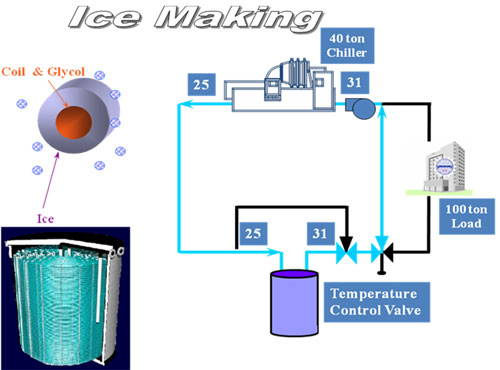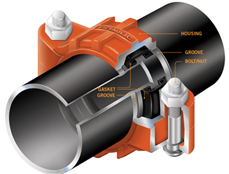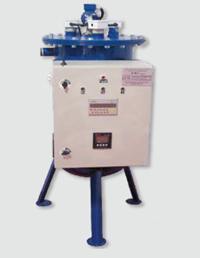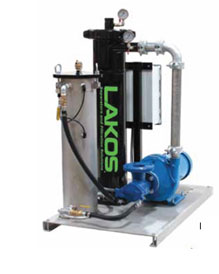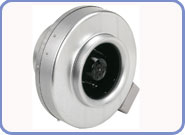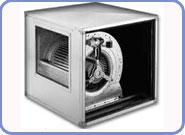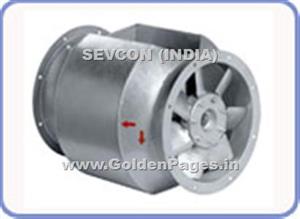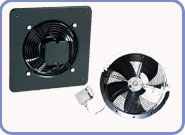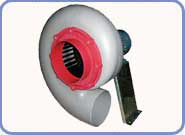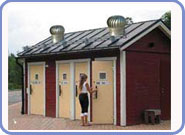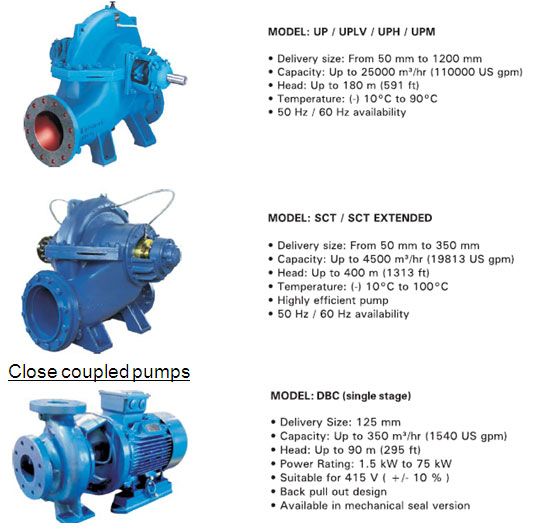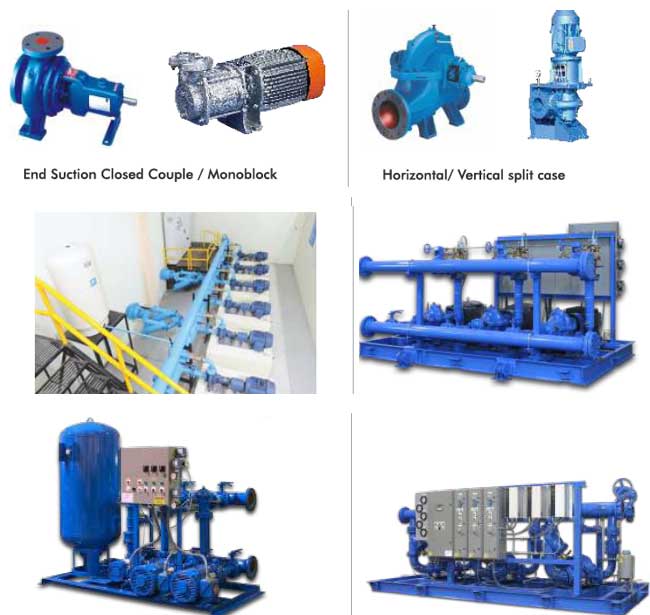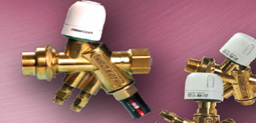
Dynamic Balancing Cum Control Valves
INTRODUCTION TO PRESSURE INDEPENDENT SELF BALANCING AND DYNAMIC TEMPERATURE CONTROL & AUTOMATIC BALANCING
Valveautomatic Balancing Systems
What Is Balanced System:
A cooling or heating water distribution system is balanced when the flow in the whole system (through the component lines, distributing and main distributing lines) corresponds to the flow rates that were specified for the design of the system. If the correct balancing of the system is not established, this will result in unequal distribution of the flow so that there will be a surplus effect in some of the terminals, whereas the effect will be inadequate in others. The result of this will be that the required heating/chilling will not be ensured in all parts of the installation. In practice it is not possible to make a correctly balanced system by manipulation of the piping or alteration of the pipe dimensions. Only a correct set of balancing valves can ensure the correct distribution of the flow in the system.
An automatic balancing valve uses the latest flow technology to ensure that the design flow rate is achieved at all times irrespective of any pressure changes with in the system.
Constant Flow:
Until recently constant-flow systems set the standard in HVAC system design. They allow standard designs to be applied to numerous different projects, typically incorporating fixed-speed pumps sized to match the maximum load of the system, These systems are balanced using a proportional method with manually set, fixed-orifice, double-regulating balancing valves installed to account for and reduce the impact of pressure changes in the system. In such constant-flow systems, the capital costs are, indeed, low. However, the energy usage is high, since these systems and the pumps driving them rarely operate at the 100% load they were designed for, calling into question the effectiveness of balancing this type of system in the first place. Further, the process of proportional balancing to commission the system is long, painstaking and expensive.
Variable flow:
Variable-flow systems have risen in popularity primarily because they reduce a system’s energy consumption. They use variable-speed, inverter-driven pumps, the speed of which is changed to match the load. 2-port, motorized control valves are often used to control flows to terminal fan-coil units, or thermostatic radiator valves are used to regulate flow to radiators in heating-only systems. Current solutions in variable-flow systems also include a combination of differential-pressure control valves (DPCVs) which can be used on branches and/or across air-handling units, with double regulating valves to proportionately balance and limit flows to all terminal valves.
However, with both variable- and constant-flow systems, fully automatic balancing can enhance the performance of the HVAC system, eliminating any problems caused by high or excessive system pressures, including noise from the valves and, ultimately, poor control of room temperature. The way the system is balanced will also have a major impact on energy usage, by minimizing pumping costs.
Applications for this type of product include the control of fan-coil units, chilled beams and air-handling units in variable-volume heating and cooling systems and the control of secondary flow on plate heat exchangers. This integrated approach significantly reduces installation and commissioning costs, since the three control functions are specifically matched to ensure optimum system performance and only one valve has to be mounted in the system instead of three. The problem of high and varying pressure drops across traditional 2-port control valves is also effectively eliminated, ensuring a control-valve authority of 100%. It also saves on space, an important concern in, for example, air handling unit installations where the available plant room space for valve installation is often severely restricted.
Applying automatic-balancing technology in constant-flow heating and cooling systems brings advantages too:
Primarily, the use of adjustable flow limiting valves is designed to optimize water flow and can prove invaluable. Such valves provide flow limiting, shut-off and adjustment functions, automatically compensating for changes in system pressure to maximize energy efficiency.
The time and cost of balancing is25 also significantly reduced:
For example, in a typical installation of fan-coil units, manual balancing valves are required at all terminal units, branches, risers and pumps. In contrast, because of their added functionality, automatic balancing valves are only needed at terminal units, reducing the number of valves used, cutting costs and creating a more flexible HVAC system that can be easily adapted or expanded without having to make any new calculations or re-commission the whole system. Indeed, parts of the system can be commissioned and completed in phases, to allow for partial occupation of the building, if required — which can be especially useful in, for example, hotels and hospitals. These adjustable flow-limiting valves are easy to size and set and provide effective flow limitation at terminal units, irrespective of changes in flow and pressure conditions in other parts of the system.
Pressure Independent and Dynamic Temperature Control Valve:
Traditional control valve sizing for constant flow systems involves a Kv calculation, actual pressure drop calculation and a check to ensure minimum valve authority is met. This method is complicated and inflexible, as the changes in design flow, circuit pressure, and required pressure drops can change the required valve, and reduce control-ability. This method also relies on having the correct design information. Pressure independent control valves are used to limit the flow to the fan coil terminal and air handling unit. This flow is not affected by changes in inlet pressure. A diaphragm within the valve keeps the outlet pressure constant, and this delivers a constant flow to the terminal.The added advantage of pressure independent control valves is that, when fitted with an actuator, they replace the manual balancing valve and motorized control valve with a single valve, thus reducing installation cost.
Pressure independent Control Valve Strategy:
Pressure independent control valves can be used with any control system. The actuator options give a choice of thermal, 3-point control, or modulating control. This will work with building management systems and individual room controls, in the same way as traditional control valves. The actuators can also be used to set the valve by limiting flow. In 3-point control applications this can be done using a run time limitation. For example, for 70% design flow we give the actuator 70% of its total run time. With a modulating actuator, to achieve our 70% example we set the controller to control between 0-7v of the 0-10v signal.
Conclusion
The flow rate of a conventional two-way valve depends upon both the degree of opening and the pressure. For example: a valve that is 50% open and supplies 5 GPM at 4 PSI, will at 36 PSI, supply 15.0 GPM at the same opening. When a conventional two-way control valve opens or closes, it causes pressure changes in the system. Often the pressure changes are quite large, and this causes a severe distortion of the valve’s ability to control. When all the valves are open the differential pressure is very low, but as they close the pressure increases more and more. Eventually the full pump pressure exists over the valves. The differential pressure across the valves increases quickly as the flow is reduced. This is due to the quadratic nature of the losses in the pipe, coil and other system components.
The PICCVs are used as a replacement for conventional two-way control valves and will regulate the flow rate regardless of the differential pressure. In other words, it is a true flow controller. It consists of a differential pressure regulator in series with a control valve. The differential pressure is held constant over the control valve. This is what gives a specific flow for each degree of opening, regardless of the differential pressure over the whole PICCV valve. The pressure changes before and after the PICCV valve are absorbed by the pressure regulator, so the differential pressure across the control valve remains constant The flow rate of the PICCV valve depends only on how much the actuator has opened the valve. The actuator modulates the PICCV to a required flow rate, independent of the pressure.
Overflow affects the ability of the control system to achieve the set temperature. It need not be inevitable. Some pressure independent control valves enable fan coils and air handling units to have the maximum flow set exactly at design flow. Switching a traditional control valve to a pressure independent type should not be seen as only benefiting the mechanical contractor, by reducing installation cost. It benefits the systems integrator and most importantly the client, ensuring both improved comfort levels with reduced energy consumption. Pressure independent control valves are an essential part of the hydronic control in chilled water applications. They are simple to select and easy to set. They enable a steady pressure, a steady flow and most importantly a steady room temperature.
